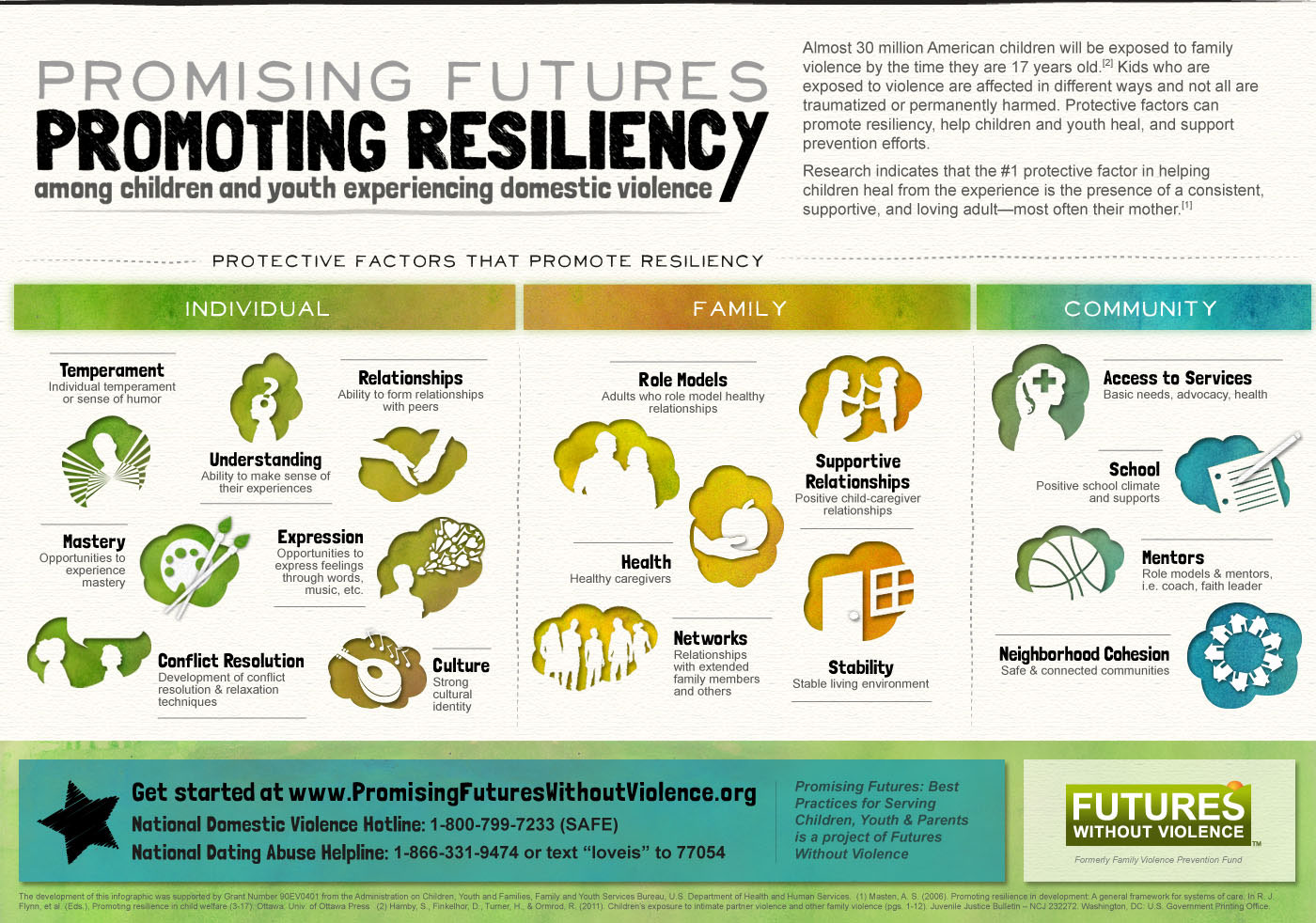Exposure to domestic violence as a child can have lingering effects on children and youth. Those who take care of children and youth are in a unique position to seek opportunities to help them manage and make sense of what they have seen.

First, take in consideration if the child/youth, based on their age of development, show any of these behaviors:
Newborn to 5 year old
- Sleep and/or eating disruptions
- Lack of responsiveness/Withdrawn
- Intense separation anxiety
- Inconsolable crying
- Developmental regression, loss of acquired skills
- Intense anxiety, worries or new fears
- Increased aggression and/or impulsive behavior
Ages 6 to 11
- Nightmares, sleep disruptions
- Aggression and difficulty with peers
- Difficulty with concentration and task completion
- Withdrawn/ Emotional numb
- School avoidance and/or truancy
Ages 12 to 18
- School failure
- Impulsive and/or reckless behaviors, e.g.,
- School truancy
- Substance misuse Running away
- Involvement in violent or abusive dating relationships
- Depression
- Anxiety
- Withdrawn
Source: National Child Traumatic Stress Network
If a child/youth displays some of these behaviors, there are a range of therapeutic treatments, programs and supports available. The North Carolina Child Treatment Program is a credible program that trains and maintains a directory of therapists who skilled in serving children and youth who have a trauma like child sexual abuse, violence exposure and other forms of abuse. The therapists are trained in one or more of the following therapies found to be helpful to children and youth exposed to domestic violence:
- Attachment and Biobehavioral Catch-Up (ABC)
- Child and Parent Psychotherapy (CPP)
- Parent and Child Interaction Therapy (PCIT)
- Structured Psychotherapy for Adolescents Responding to Chronic Stress (SPARCS)
- Trauma-Focused Cognitive Behavioral Therapy (TF-CBT)
Other community-based programs can help children and youth develop skills, beliefs and attitudes that encourage positive, healthy results. We call these skills, beliefs and attitudes protective factors. Below is a graphic that demonstrating different protective factors that can improve recovering from child and youth exposure to domestic violence.



